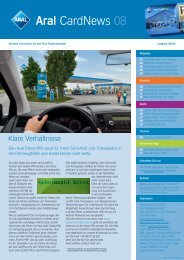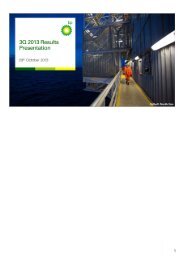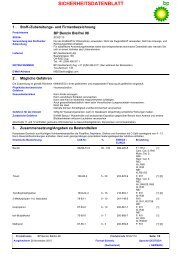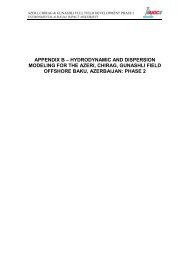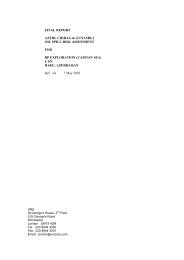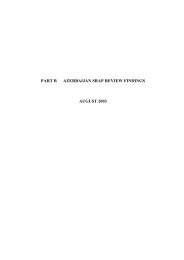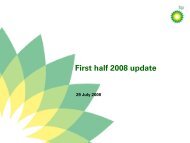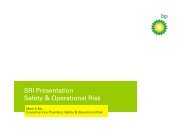Don Field Decommissioning Programme (pdf, 7.8MB) null - BP
Don Field Decommissioning Programme (pdf, 7.8MB) null - BP
Don Field Decommissioning Programme (pdf, 7.8MB) null - BP
You also want an ePaper? Increase the reach of your titles
YUMPU automatically turns print PDFs into web optimized ePapers that Google loves.
DON-<strong>BP</strong>-001<strong>Don</strong> <strong>Field</strong> <strong>Decommissioning</strong> <strong>Programme</strong>5 EIA Process and MethodologyAn Environmental Issues Identification (ENVID) workshop was used to identify and rankall potential environmental issues associated with the <strong>Don</strong> <strong>Field</strong> decommissioning. Theissues that ranked as negligible or of minor significance were screened out. Theremaining issues were carried over for further assessment. <strong>BP</strong> has aimed to remove orreduce the environmental risk of such issues through various identified mitigation andmeasurement measures in order to remove or reduce the environmental risk. Theimpacts identified for further assessment are discussed in the following paragraphs: Atmospheric emissions (Paragraph 6) Seabed disturbance (Paragraph 7) Discharges to sea (Paragraph 8) Underwater noise (Paragraph 9) Physical presence (Paragraph 10)6 Atmospheric Emissions6.1 IntroductionThere has been a considerable increase in public attention on pollution of theatmosphere with consequent threats to both natural ecosystems and human well-being.This attention focuses on potential effects at local and national, transboundary (NorthSea) and global levels.The major sources of atmospheric emissions from offshore operations is the combustionof fuel in the generation of power, and in relation to the <strong>Don</strong> <strong>Field</strong>, these will arise fromthe use of a Light Well Intervention Vessel (LWIV), a Mobile Offshore Drilling Unit(MODU), and Diving Support Vessels (DSVs).Throughout decommissioning activities there will be a guard vessel present, with a LWIVor MODU also present during well abandonment operations and a DSV during pipelineabandonment operations, which will give rise to localised elevated levels of atmosphericemissions. However, these elevated concentrations will be restricted to the duration ofthe activities and are unlikely to be detectable within a short distance of the vessel dueto the dispersive nature of the winds in the area.6.2 Quantification of EmissionsA total figure for atmospheric emissions (oil and gas industry and shipping industryamongst others) in UK waters does not exist. However, it is possible to estimate whatthese emissions are by combining oil and gas industry data (as submitted annually to theDepartment of Energy and Climate Change (DECC) and Oil & Gas UK (OGUK)) with dataestimated from analysis of refuelling activity at shipping fuel bunkers within UK ports andharbours (Department for Environment, Food and Rural Affairs (DEFRA), 2007).Environmental Impact Assessment9-4 May 2011




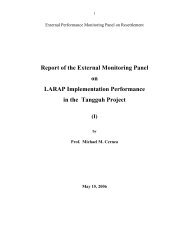
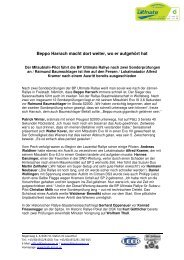
![[PDF] Deepwater Horizon: Accident Investigation Report - BP](https://img.yumpu.com/51697031/1/190x245/pdf-deepwater-horizon-accident-investigation-report-bp.jpg?quality=85)

